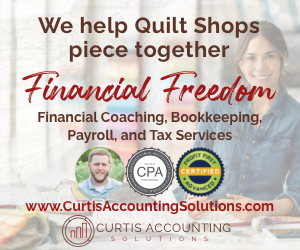
Inflation recently hit a 40 year high. Read on to understand how this is affecting your business.
Shipping Containers
According to Scott Fortunoff, President of Jaftex Corp., shipping container costs were $3,000 to $5,000 prior to the pandemic. During the pandemic, however, the price of a shipping container peaked at between $25,000 and $30,000. As of mid-summer this year, prices have averaged around $20,000.
Gas
Once goods arrive onshore, they must be shipped on-site. Gas has increased around 20% over the last two years.
At one point this year, firm President Brad Krieger of Ohio-based Checker Distributors paid a 25% fuel surcharge. Krieger also added he doesn’t remember the last time FedEx’s small package service added a fuel surcharge prior to the pandemic.
Labor
Another piece to consider is labor costs. Not every aspect of creating craft goods is automated. Things like precuts are still labor intensive.
Some businesses have seen labor costs increase 15% to 20% since the pandemic and are still short staffed, like Riley Blake Designs in Utah per their CEO Bret Cloward.
Materials
Prior to the pandemic some materials used to be easier to receive, such as acrylic. Acrylic is the material used to produce the plastic shields that protect front-line workers. Combine that with the natural disaster that caused petrochemical plants in west Texas to shut down during the deep freeze of 2021, and retailers have seen six price increases in a two-year span. Director of Wisconsin-based Quilter’s Rule Patricia Simons is just one of many creative retailers who have been effected.
The price of cotton is fluctuating also. Cotton futures used to be anywhere from 50 cents to 70 cents a pound. In fall 2021, prices rose to 90 cents a pound, and in spring 2022, peaked at 150 cents per pound. Prices fell off a cliff after that but remain about 40% higher than January 2020.
Other Price Hikes
Of course, you’ve noticed inflation in other ways too. Shipping supply costs have increased 50 percent in the past two years and building utilities have increased also. Understanding these price increases can help with explaining to customers when they notice it also. When it comes to crafting I think we can all agree quality comes first.
Inspiration for this post comes from “In This Together” by Katherine House published in the October 2022 issue of Creative Retailer.
If you’re looking for more information to guide you in owning a retail business, subscribe to Creative Quilt Retailer today. Already a subscriber? No worries—join our Facebook group for insights and dialogue from industry specialists like you. And don’t forget, you can always purchase single issues if you prefer that instead.













